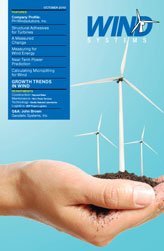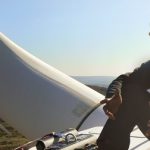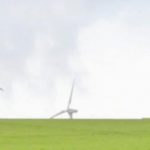Despite governmental efforts to tap various energy sources there exists a gap between demand and supply, and industries across the globe are bracing themselves to face the challenges posed by the gravity of energy crisis. Even the recent economic slowdown and increasing use of different energy sources have failed to mitigate the growing hunger for power, and demand for electricity is increasingly on the rise in India, China, and other developing countries due to the rapid pace of industrialization and increasing usage of industrial goods.
A recent research paper from Lucintel titled “Competitive Analysis of Conventional and Renewable Energy Sources: Opportunities and Cost Analysis” shows that, although most of the countries are dependent on conventional energy such as coal, natural gas, and nuclear, etc., due to growing environmental consciousness and government incentives entrepreneurs and investors are increasingly being attracted toward nuclear and renewable sources.
Renewable energy’s share will increase due to financial and governmental norms such as the Kyoto protocol, production tax credits, investment tax credits, and Feed in Tariff (FIT), etc.
In the last five years there was strong growth in renewable energy as compared to conventional energy. Renewable energy is likely to witness strong growth in the future, too. In the future solar/thermal might witness strong growth because utility companies are keen to generate electricity from the solar/thermal sources. There was miniscule growth in the nuclear energy, as it takes eight to nine years to construct a new nuclear plant.
We found that in the overall energy market, acceptance and installation of other forms of electricity generation—particularly alternative “clean” generating technologies—could have a somewhat negative impact on conventional energy industry profitability. On the other hand, recent volatility in fossil fuel costs, coupled with the environmental problems associated with burning such fuels, could be a positive factor driving increased acceptance of alternative technologies, especially environmentally friendly technologies such as wind and solar. Power costs from solar generation have decreased via better technology, efficiency, and capacity scale. With the recent (mid 2008) uptick in fuel prices, energy costs became more competitive.
Wind energy was the fastest growing energy sector, with an average growth rate of 27 percent from 2004 to 2009. Europe has seen a consistent growth because of favorable government tax credit policies. Following these trends the U.S. government offered a production tax credit (PTC) in 2001 and 2003, and this resulted in a growth rate of 63 and 36 percent respectively in those years. However, in 2004, with the expiry of the PTC, wind turbine installations in the U.S. saw a virtual stop, and only 502 MW of new capacity was added that year. Interest in wind bounced back, however, and global cumulative installed capacity of wind energy reached 158 GW in 2009. The United States played a vital role in the growth of wind energy. The U.S. contributes nearly 22 percent i.e. 35 GW of global capacity installed. Wind energy contributed 3 percent of total energy market in terms of capacity installed in 2009. Among renewable energy sources wind energy contributed 64 percent of the total, excluding hydro energy.
Europe has championed growth in wind energy, and of the total 76152 MW installed in 2009 Europe installed 51 percent. The North American and Asian regions accounted for 25 and 22 percent of these new installations, respectively. The top five countries driving the growth of wind energy market in the last 10 years are Germany, Spain, the U.S., India, and China. Globally, new wind energy capacity installations have surged from under 47,620 MW in 2004 to more than 157,899 MW at the end of 2009, a cumulative growth of 27 percent.
The future of the wind energy market seems to be bright due to several economic and environmental reasons. The compound annual growth rate is expected to be 19 percent per year in cumulative capacity during 2010 to 2015. Currently, the overall wind energy industry is deemed to be profitable, and it is expected to remain profitable in the future based on an analysis of industry fundamentals and the competitive environment.
Contributing to industry profitability is the fact that revenue is concentrated in a relatively small number of major suppliers, many of whom have established positions in various countries and/or with specific wind farm developers and operators. On the negative side, the award of wind turbine orders typically occurs via a bid process where suppliers are quoting multimillion dollar installations to be delivered at a future date; the implicit financial risks of uncertain raw material prices, coupled with the pricing pressures of the bid process, tend to diminish profitability potential to some degree.
We found that the levelized cost of energy (LCOE) of wind energy declined during 1995 to 2003 due to a decrease in the price of the wind turbines, thereafter increased due to a rise in the price of wind turbines and again declined in 2009 due to a decrease in the price of the wind turbines. The price of wind turbines increased due to increase in the price of the raw materials such as steel, glass fiber, and copper.
The renewable energy segment grew robustly in 2009. Wind energy was the largest addition to renewable energy capacity, with 38 GW additions in 2009. The major renewable energy sources are wind energy, solar photovoltaic, solar thermal, geothermal, and marine, tidal, etc. China was the key driver, with new wind capacity installations of 13 GW in 2009.
The cumulative capacity installed of wind energy in 2009 was 157 GW, with additional capacity installed being 37 GW. The growth rate of wind energy was 27 percent CAGR in the last five years (2004-09) driven by growing environmental awareness, legislative support and incentives, and a move toward greater energy security. In the energy sector, wind energy is the most rapidly growing energy sector in the world. The driving forces for the growth of wind energy market are listed as follows.
Reduced environmental impacts: Many countries have decided to reduce carbon emissions to help alleviate global warming. By 2020 the EU-27 countries have decided to reduce emissions by at least 20 percent, compared with 1990 levels. As wind is renewable energy there are no carbon emissions, therefore increasing the number of countries opting for renewable energy such as United States and Europe, which are expected to generate 20 percent renewable energy by 2020. As many countries have signed the Kyoto protocol to reduce the carbon emission growth rate of carbon producing energies such as coal and natural gas, energy is expected to slow down in future. One of the major driving forces behind the high growth of wind energy installations is the Kyoto protocol, which aims to cut emissions of greenhouse gases by 5.2 percent in relation to 1990 levels before 2008-2012. This is a very ambitious target, given that global energy consumption simultaneously continues to rise. The fact that wind power is a clean energy source that has become increasingly competitive compared to other sources of energy in recent years gives grounds to believe that the utilization of wind power throughout the world will make an important contribution to achieving the targets laid down in the Kyoto protocol. Wind energy provides greatly reduced environmental impacts per unit of energy produced, compared with conventional power plants. Environmental costs are becoming an increasingly important factor in utility resource planning decisions. Wind energy is a key solution in the fight against climate change, and it is well on track to saving 10 billion tons of CO2 by 2020.
Electricity demand: There is growing electricity demand in the developing countries like India and China. As there is strong growth in the industrial sector and substantial increase in the usage of consumer durables, there is more demand for electricity in various countries. Global electricity demand has been growing with a CAGR of 3 percent in last five years to reach 18,000 TWh in 2009.
Incentives: The production tax credit (PTC) in the Unites States is $20/MWh. There is investment tax credit, too, for renewable energy. In the new U.S. budget $80 million has been earmarked for wind energy. The Indian government will offer Rs. 380 crore ($81 million) in incentives to wind energy projects. In Germany, Feed in Tariff (FIT) wind onshore (20 years in total)- Euro 83.6/MWh for at least five years, Euro 52.8/MWh for further next 15 years. Wind offshore (20 years in total) –Euro 91 /MWh for at least 12 years and Eoro 61.9 /MWh for further eight years. In Spain FIT, fixed feed in tariff euro 68.9/MWh and premium tariff euro 38.3 /MWh. In India FIT, 3.76-5.64 INR/KWh. In China FIT 0.51CNY /KWh to 0.61/KWh depending on the wind output.
Greater fuel diversity and less dependence on fossil fuels: Greater fuel diversity and less dependence on fossil fuels—which are often subject to rapid price fluctuations and supply problems, are significant issues around the world today—with many countries rushing to install gas-fired electric generating capacity because of its low capital cost. As world gas demand increases the prospect of supply interruptions and fluctuations is expected to grow, making further reliance on it unwise and increasing the value of diversity.
Cost: The cost of generating electricity from wind energy is low as compare to other renewable energy sources such as solar PV and solar thermal.
For the conventional energy such as coal, natural gas, and nuclear, the major drivers are the cost of generating electricity. The cost of generating electricity from the conventional energy is lower as compared to renewable energy. The abundance of raw materials and the non-reliance on nature are the major drivers behind conventional energy. On the other hand, recent volatility in fossil fuel costs, coupled with the environmental problems associated with burning such fuels, could be a positive factor driving increased acceptance of alternative technologies, especially environmentally friendly technologies such as wind and solar.
The research would not be complete without analyzing the LCOE of different energy sources. The LCOE is the cost of generating energy for a particular system. It is an economic assessment of the cost of the energy-generating system including all the costs over its lifetime: initial investment, operations and maintenance, cost of fuel, etc. Some of the significant outcomes of our analysis on levelized cost are: the levelized cost of energy of solar PV is maximum, which is $295/MWh followed by solar thermal ($197/MWh); the levelized cost of energy of wind is $ 106/MWh. The cost decreased in 2009 as compared to 2008 due to decrease in the wind turbine cost; and the levelized cost of energy of coal is $80/MWh.
We found that the LCOE of solar PV is maximum among all the energy sources due to high capital cost. The LCOE of natural gas is low among all the energy sources due to minimum capital cost requirement. The LCOE of natural gas is less, followed by coal. As per the study the levelised cost of energy will increase in future for coal, natural gas, nuclear, and wind. There will be decreases in the LCOE of solar PV and solar thermal.
We found that the cost of generating electricity from solar photovoltaic and solar thermal will significantly decrease in the near future. The cost of generating electricity from solar photovoltaic will decrease substantially due to a decrease in the price of the solar module. More and more solar module and polysilicon players will enter the solar photovoltaic market.
As per our estimates, the energy market is expected to grow at a CAGR of 3.2 percent in terms of capacity installations during 2010 to 2015. There will be strong growth in global renewable energy, with 19 percent CAGR in next five years up to 2015. Solar thermal is expected to top the growth rate, with 62 percent CAGR in the next five years (2010-2015). The CAGR of solar photovoltaic is expected to be 32 percent, and wind 19 percent in the next five years (2010-2015).








































